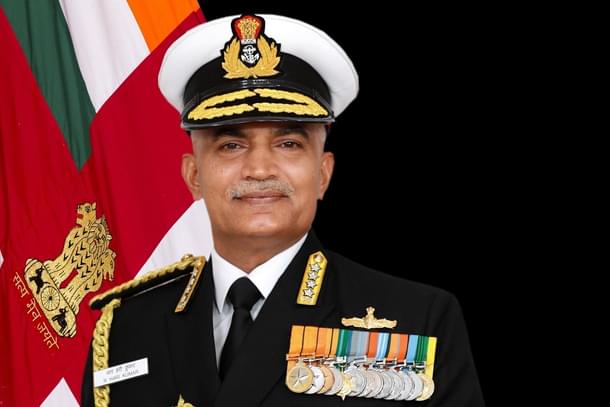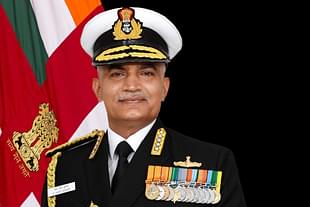Defence
Three To Six Chinese Warships Present In Indian Ocean At All Times, Navy Chief Reveals
Ujjwal Shrotryia
May 01, 2023, 03:46 PM | Updated 03:47 PM IST
Save & read from anywhere!
Bookmark stories for easy access on any device or the Swarajya app.


The Chinese Navy is always present in the Indian Ocean Region (IOR), with more than three to six warships at a given time, the Indian Navy Chief Admiral R Hari Kumar has revelaed, the Indian Express reported.
The Navy Chief was speaking at a conference, 'The Chanakya Dialogue', organised by the PHD Chamber of Commerce and Industry where he confirmed that the Chinese PLA Navy (PLAN) is docking at ports in Pakistan and various other countries in the IOR.
Acknowledging the contest between the Indian Navy and the Chinese Navy (PLAN), the Navy chief said, a contest is happening daily at sea, and warned that a possibility of a full-scale war cannot be ruled-out.
Admiral Hari Kumar said that the Pakistan Navy is targeting to become a 50-ship navy in the next 10-15 years, while the Chinese PLAN is adding ships at a tremendous rate since the last decade.
He said that the third aircraft carrier for the PLAN is in construction and they are working on constructing large destroyers, however, adding that this pace could plateau and assured that the "Indian Navy is keeping a very close watch in the Indian Ocean Region".
“At any point of time, there are three to six Chinese warships in the Indian Ocean Region,” he said adding that some are close to the Gulf of Oman, and some in the eastern part of the IOR, among others.
The Navy chief also revealed that at a given time two to four Chinese research vessels are present in the region, apart from Chinese fishing vessels. “So we refine our plans, actions that are required to be taken, and this also feeds into our capability development,” the Chief added.
Admiral Kumar explained that Chinese research vessels can collect electronic signals and the Navy monitors them closely, particularly when they are operating near India's areas of interest.
The Navy's modernisation plans aim to create a "well-balanced force", rather than focusing on nuclear submarines versus aircraft carriers. Both have distinctive capabilities, and it's not a case of choosing one over the other, he added.
"The Indian Navy will achieve fully self-reliant or 'fully Atmanirbhar' by 2047," the Chief assured the dignitaries, in time for the country's 100th year of independence.
He specified the three core aspects of a naval asset: float, move, and fight. Admiral Kumar confirmed that the float component has already reached 95% self-reliance. However, the move and flight components are only at approximately 65 per cent and 55 per cent respectively.
The Indian Navy expects its role to expand in line with the growing economy and increasing trade volume, he predicted.
Staff Writer at Swarajya. Writes on Indian Military and Defence.





